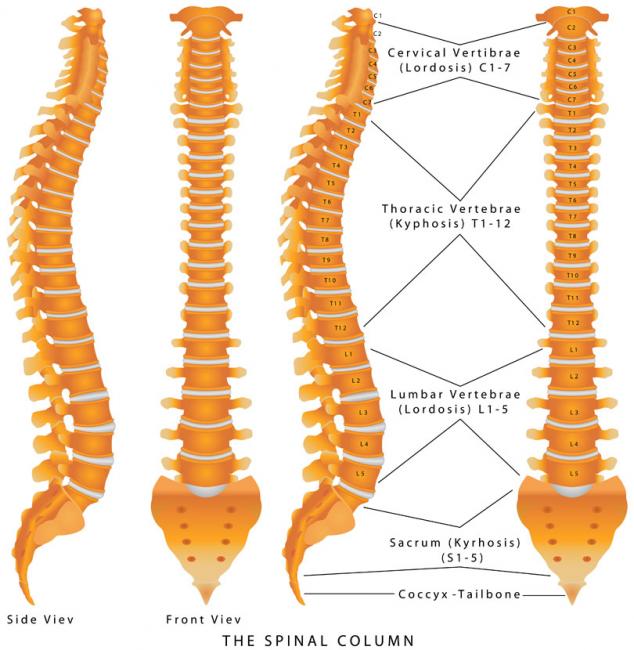Related Articles
- 26 Jul 18
In my line of work, many patients come with chronic conditions that affect their quality of life, for which there has been little to no “standard” solution. Symptoms such as slowly worsening fatigue, weight gain, skin rashes, headaches, and joint pain are common complaints.
- 16 Jun 21
Protocols in naturopathic practice are designed to help increase health span while taking into consideration the extent of disease, a variety of modalities or tools of applicability, and patient choice and values; however, exercise prescriptions stand out as part of a foundational approach nearly ubiquitous and necessary for almost everyone.
- 21 Aug 17
- 18 Sep 18
When it comes to women’s cervical health, the Pap test, also known as a Pap smear, is significantly important in reducing the incidence of cervical cancer.[1]
- 01 May 21
Acupuncture is a traditional therapy that has been used for thousands of years for the treatment of various ailments such as pain, fertility concerns, low energy, mood swings, and even colds and flu. It involves the insertion of very fine needles at specific points on the body to promote healing through the stimulation and circulation of “Qi.”
- 01 May 21
A holistic approach to chronic-disease prevention and treatment often includes exercise therapy as an essential modality. Exercise is generally considered a healthy activity, with few exceptions, and its application is a logical addition to any health program.
- 27 Aug 18
Most women spend their entire lives waiting for their menstrual cycle to end. “No more discomfort!” we cry, thinking that this glorious time will bring cessation of all our hormone imbalances, headaches, skin concerns, bloating, mood swings, and of course risk of pregnancy.
- 05 Aug 14
- 21 Apr 18
Today, most schools are nut-free facilities, and laws have been passed to ensure proper labeling of all ingredients in a product. Still, many families struggle with the idea of keeping certain foods off the dinner table.
- 26 Feb 21
According to Tolstoy, patience and time are the most powerful warriors. When it comes to the pandemic, they certainly seem to have been important allies. The time for vaccines has finally arrived. However, we have also been told to not let our guard down. Vaccines are not the only secure gateway, and encompassing a healthy lifestyle is still needed for effective herd immunity and to protect ourselves and our loved ones
- 28 Feb 19
A healthy gut is a crucial part of maintaining your overall health. It seems today that many diseases and health concerns have root in an imbalanced gut. The foods we consume, the stresses we experience, and the exposure to toxic elements have created a dysbiosis of the gut. This leads to changes in our moods, our vitality, and our energy. We feel less inclined to get through the day, and most of our day becomes a task rather than anything else.
- 14 Mar 18
Hypothyroidism is a term used to describe an underactive thyroid gland. Hypothyroidism is further classified according to “type”: subclinical, primary, or secondary hypothyroidism. The main function of the thyroid gland is to regulate the metabolic processes essential for normal growth, development, and tissue differentiation.
- 14 Feb 18
The easiest practice for a healthcare practitioner is to simply prescribe a treatment to their patient, sit back, and hope it resolves their health issue. Studies in behaviour therapy, however, suggest that we can really stand to make a long-lasting difference if we first take the time to delve a little deeper into understanding the patient’s everyday life.
Whether it’s a recommendation for a new supplement regimen, a lifestyle or a dietary change, there is more involved in creating lasting behaviour modification than simply ... - 14 Jun 18
Allergic rhinitis (AR)—known for causing watery eyes, sneezing, runny nose, itchy eyes, and nasal congestion—is becoming more common in developed countries. In Canada, up to 44% of individuals claim to have experienced AR symptoms, while 20% have been diagnosed by their medical doctors. For some, it happens mostly during spring or fall, termed “seasonal allergies,” and for others, it is present all year round, aka “perennial allergies.”
- 14 Jun 18
The availability of contraceptive birth control has been incredibly supportive of women’s autonomy over reproductive health. As women, we’ve been given this amazing opportunity to be in control of our bodies; whether it be for preventing an accidental pregnancy, or for obtaining relief from hormonal dysfunction.
- 02 Nov 16
Since the naturopathic approach to health and healing is different from traditional western medicine, your doctor would like you to know these five things to maximize your treatment.
- 01 Nov 13
$path = isset($_GET['q']) ? $_GET['q'] : '
';
$link = url($path, array('absolute' => TRUE));$nid = arg(1);
if ($nid == 201311){
?>download pdf
}
?> Currently, there exists much information, as well as mis-information, about interactions between certain herbs & nutrients and drugs. Some of the most common questions we receive as naturopathic doctors (ND) pertain to this area. This is a very complex area, and we certainly encourage you to consult with a trained healthcare provider such as an ND if you are on any medications.
16 Jun 13
Currently, there exists much information, as well as mis-information, about interactions between certain herbs & nutrients and drugs. Some of the most common questions we receive as naturopathic doctors (ND) pertain to this area. This is a very complex area, and we certainly encourage you to consult with a trained healthcare provider such as an ND if you are on any medications.
16 Jun 13
The intestinal epithelium is the largest surface in the human body exposed to the external environment. The ability of this epithelial layer to act as a barrier is found to be essential to health. The selective permeability (allow some things to pass, prevent other things from passing) of the intestinal epithelium is a highly regulated process that is part of the normal functioning of the intestinal tract.
Newsletter
Most Popular
- 03 Apr 14
- 09 Mar 15
- 07 Feb 18
- 17 Jun 13
- 17 Jun 13
- 17 Jun 13
- 01 Jul 13
- 17 Jun 13
- 17 Jun 13
- 17 Jun 13
- 01 Jul 13
- 17 Jun 13
- 17 Jun 13
- 17 Jun 13
- 01 Jul 13

































